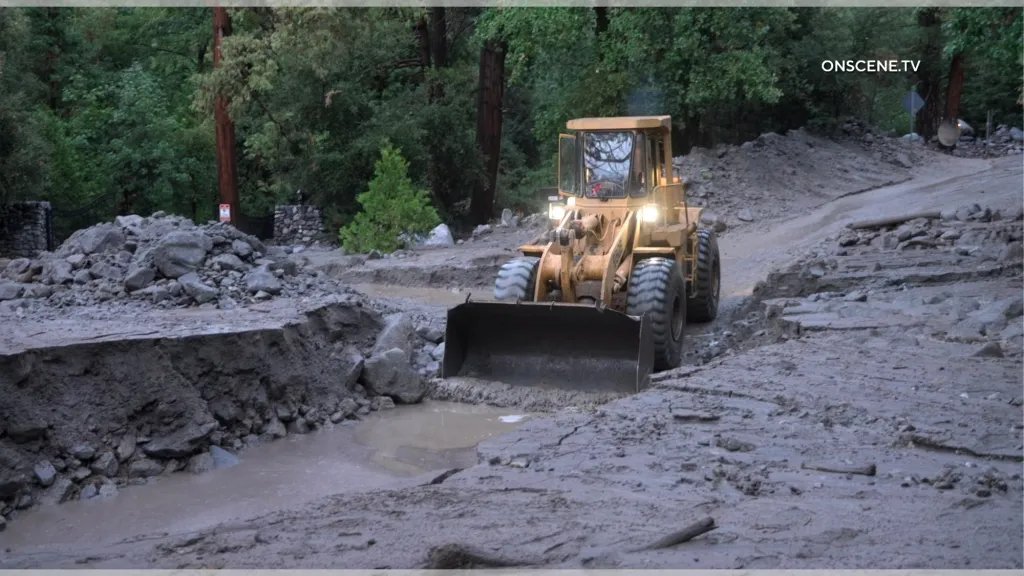The Impending Storm: Flood Risks Rise in Los Angeles County Burn Scars
As the sun dipped below the horizon, the air in Los Angeles County grew heavy with the foreboding scent of rain. Local residents stared at the sky, anxiously waiting for the meteorological predictions to manifest. Earlier forecasts had suggested a gentle downpour, but the latest projections hinted at a storm that could unleash an unprecedented barrage of rain over the burn scars, the remnants of wildfires that had ravaged the region. For many, this wasn’t just another weather event; it was a wake-up call to prepare once more for the destructive forces that nature can wield.
Tracking the Storm: Forecast Adjustments
Initial meteorological models presented a milder system that would move over the area slowly. However, an updated evaluation by the National Weather Service (NWS) revealed an alarming enhancement in rainfall rates. “We’re now focusing most of the impacts in a 24-hour window from Monday night to Tuesday night,” stated NWS meteorologist Dave Gomberg. “We have to start thinking about flooding and debris flows in recent burn scars.” This shift in focus highlights a critical understanding of the relationship between rainfall intensity and susceptibility to flooding in areas previously marked by fire.
Understanding the Risks
The storm is poised to deliver rainfall totals between half an inch to 1.5 inches in lower elevations, while the foothills may see totals reaching up to 2 inches. What makes this prediction particularly concerning is not necessarily the total rainfall but rather the intensity at which it may fall. Rich Thompson, another meteorologist with the NWS, elaborated, “It’s these enhanced rates of rainfall that raise our concerns about potential flooding.”
- Effects of Burn Scars: Burn scars disrupt the natural absorption of water into the soil, increasing the risk of both flooding and debris flows.
- Preparation Measures: Preemptive measures like evacuations and resource deployments can help mitigate disaster risks.
- High-Intensity Forecasts: Meteorological models can change quickly, underscoring the need for constant vigilance and up-to-date information.
Regional Responses and Resource Allocation
As the storm approached, California Governor Gavin Newsom announced the prepositioning of vital rescue and fire resources in San Bernardino and Imperial counties. “We can’t afford to wait until disaster strikes to respond,” he said. “Deploying our resources ahead of time allows us to be proactive and minimize impacts.” The state prepared four fire engines, one hand crew, and an unmanned aircraft system, among other resources, ensuring quick response times to potential emergencies.
Local fire agencies are collaborating closely with state officials to identify at-risk areas, allowing them to make requests for additional support if conditions worsen. This coordinated approach to disaster preparedness acknowledges the challenges posed by the unpredictable nature of such storms.
The Psychological Toll on Residents
In burn scar areas, the psychological toll on residents can be just as significant as the physical damage caused by flooding. Many community members, scarred by past disasters, have developed a heightened awareness of impending storms. “We live in a constant state of alert, not just during the storms but even when the skies are clear,” explained Annie Rodriguez, a resident of a community near a recent burn scar. “Every storm feels like it could be the one that breaks the levees.” An ongoing study spearheaded by the Institute for Disaster Resilience at UC Los Angeles indicates that repeated exposure to such events can result in long-term mental health impacts, including anxiety and post-traumatic stress disorder (PTSD).
A Call to Action: Community Preparedness
The Governor’s Office echoed the urgency for residents in flood-prone or burn scar areas to remain vigilant. It advised Californians to prepare for potential evacuation by taking the following steps:
- Develop and review evacuation plans with all family members.
- Pack go-bags containing essentials (food, water, medications).
- Sign up for local emergency alerts to stay informed.
- Check on neighbors, especially those who are elderly or may need assistance.
Looking Ahead
As the weekend approached, residents braced themselves for the oncoming storm, fortified by a blend of preparedness and uncertainty. The weather patterns may be merciless, but the resilience of the community shone brighter than any looming clouds. With resources strategically positioned and a heightened awareness permeating the air, there existed a shared sentiment that they were not alone in facing the storm.
The impending deluge may test their limits, but the collective spirit forged in the fire of past challenges could offer a flicker of hope amid the encroaching darkness. As Los Angeles County stands at the precipice of yet another storm, it becomes increasingly clear that the greatest floods may not only be measured in inches of rain but also in the strength of community bonds forged in the crucible of adversity.





